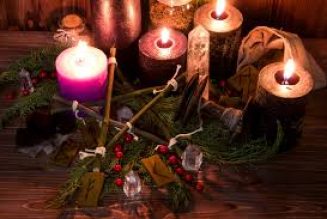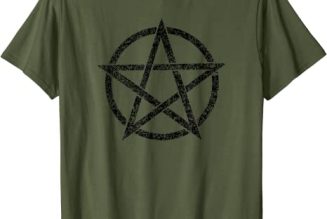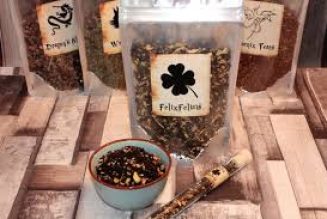Depending on the tradition, the coven, and/or the individual Witch, variations and additions to the tools described above may be used in ritual and spellwork.
For example, some Witches use a sword in addition to, or in place of, the ritual knife.
However, swords can be impractical for indoor rituals due to their size and are not as easily obtainable as knives, and so are less commonly used.
A staff is also sometimes used in formal ritual, held by the High Priest or Priestess of a coven.
Like the wand, it carries the representations of Air and God, though in some traditions it represents Fire. It is usually made of wood and may be decorated with magical symbols and/or semiprecious stones.
Many Witches also incorporate divination tools in their ritual practice.
These may include runes, tarot cards, a quartz crystal sphere (or“crystal ball”) for scrying, or other oracles borrowed from older traditions, such as the I-Ching.
Individual items, such as a specific Tarot card or rune, may be incorporated into spells for specific purposes.
The crystal sphere is often used on the altar to represent the goddess.
As mentioned previously, divination may take place during a formal ritual, but post-ritual is also considered a good time for this activity, as the Witch is still in a conducive state of mind to communicate with the Spirit world at this time.
Finally, many Witches like to include magically charged jewelry and other elements of “costume” into their practice.
Some may simplywear a pentacle on a chain, as mentioned above, while others may don special robes and/or a headpiece encrusted with gemstones to enhance their personal energy during ritual.
Witches in some traditions also work naked, which is generally referred to as “sky-clad.
”As with any other aspect of Witchcraft, there is no set-in-stone way to approach using the tools of ritual and magic.
While its generally considered helpful to use at least a few, if not several, of the tools described above, it is ultimately about the Witch and his or her connection to the specific tools chosen, or the coven members’ collective affinities for the specifics of their ritual practice.
At times those identifying with Modern Witchcraft are likely to have some symbolic representation of the Goddess and God at Sabbat celebrations, and the Goddess Esbats, but the way this is carried out can vary widely.
While some covens and solitaries may create elaborate rituals using every tool imaginable, others may design very simple affairs involving simply a candle and a crystal.
In other words, it’s more about using what feels inspiring and “in tune,” rather than gathering items from a checklist.
If it feels out of place, or unpleasantly strange to a particular Witch to purchase and use a cauldron or a censer, or wear special robes, then these items may simply not be necessary or suitable for that person.








